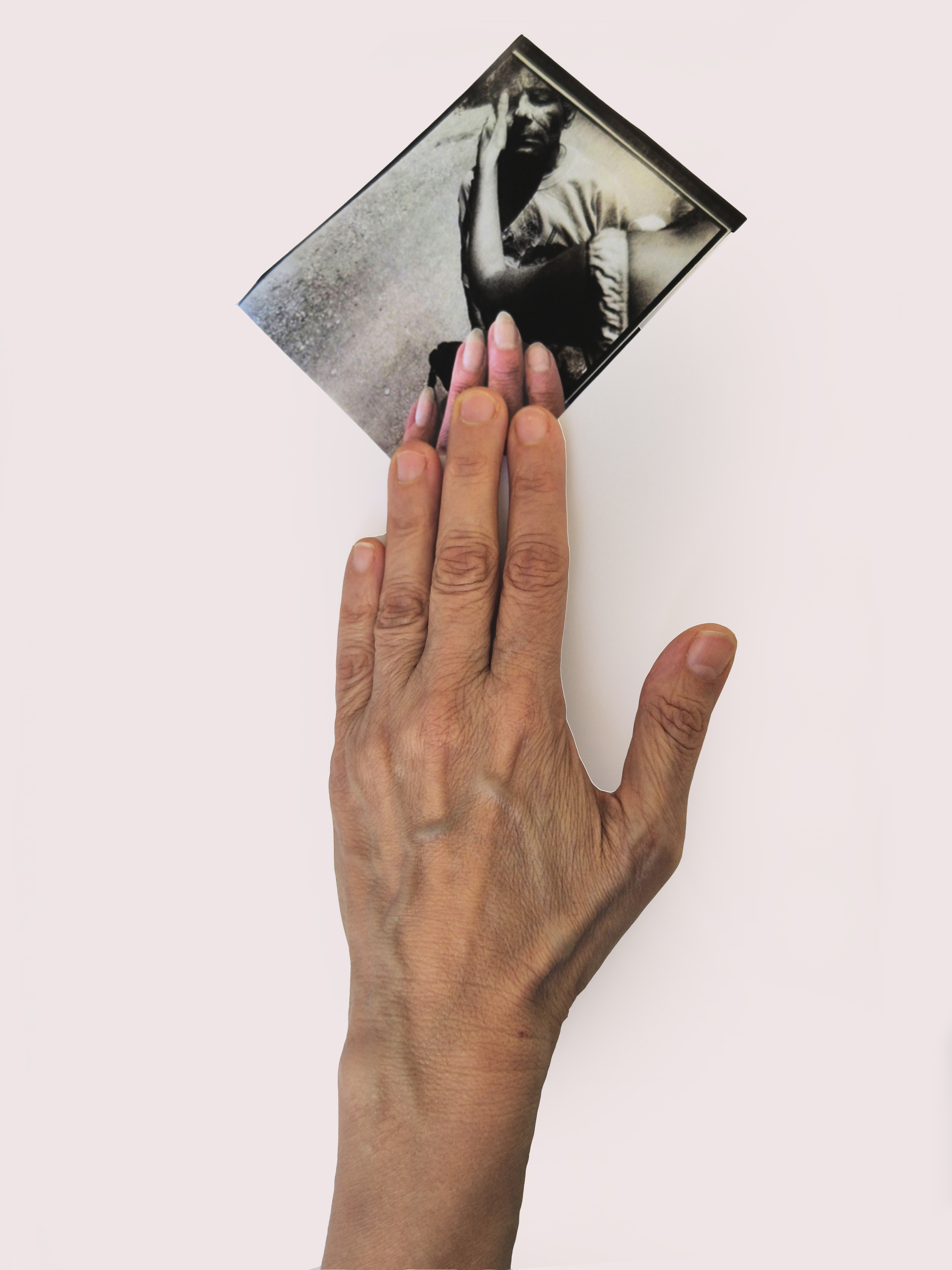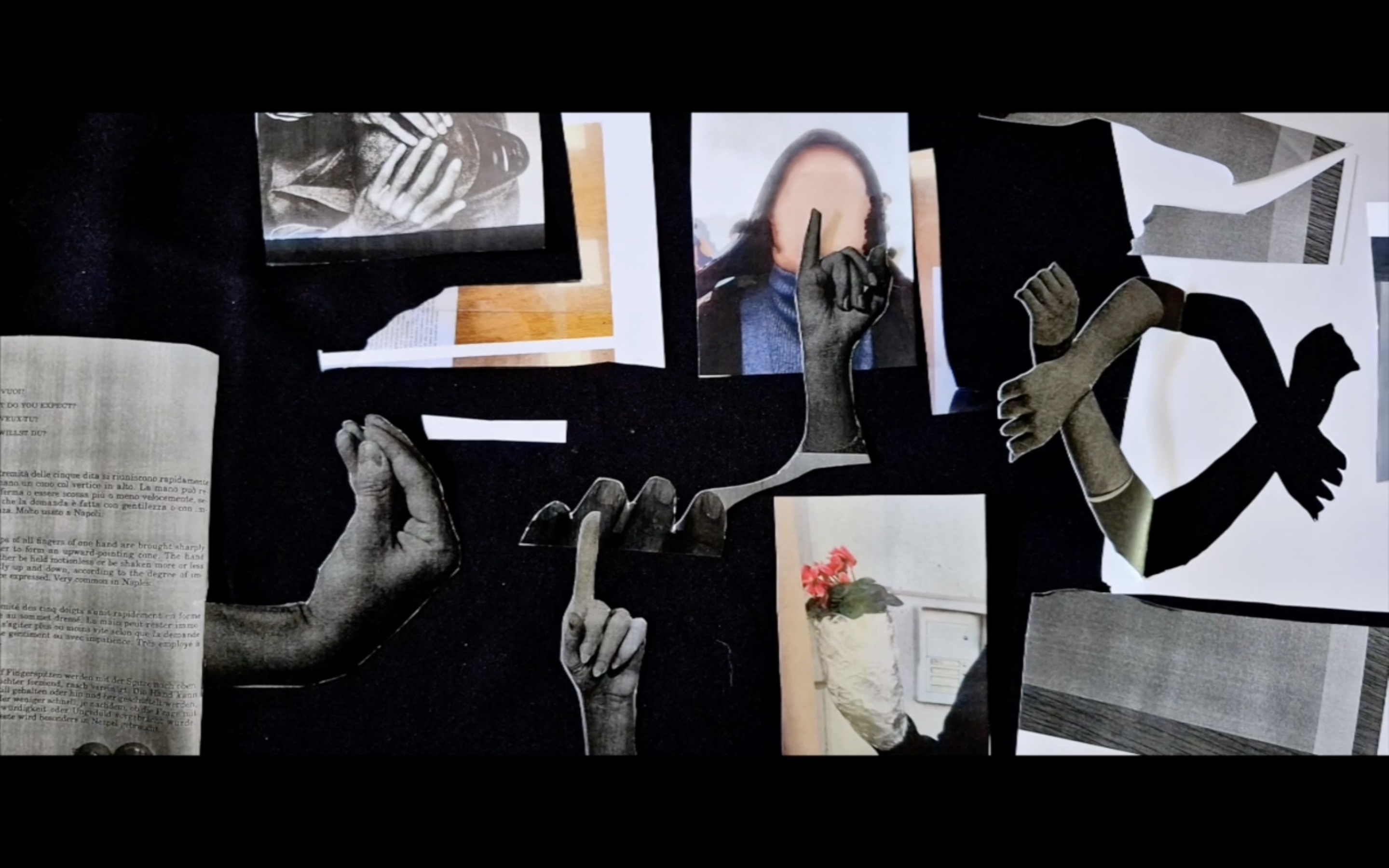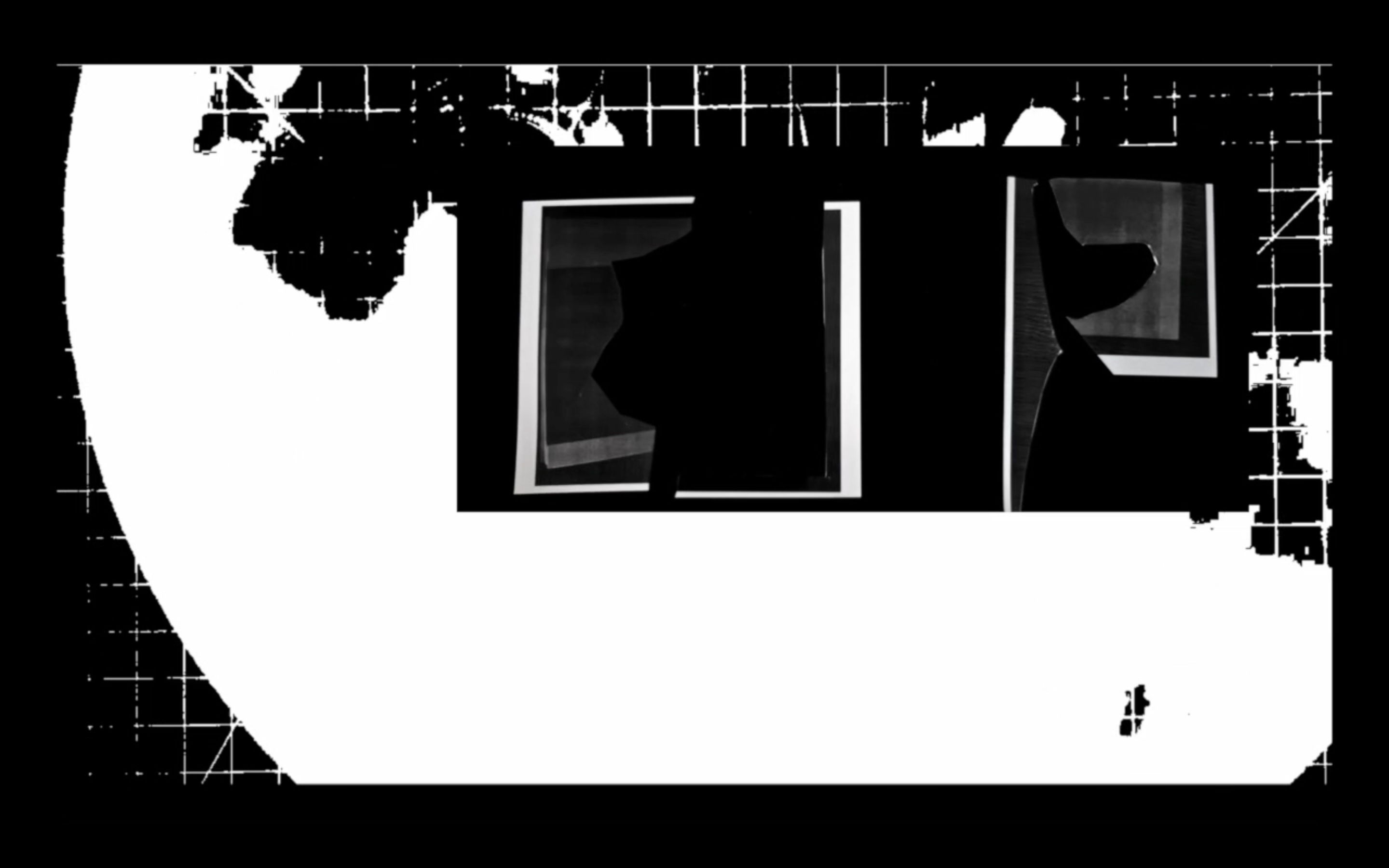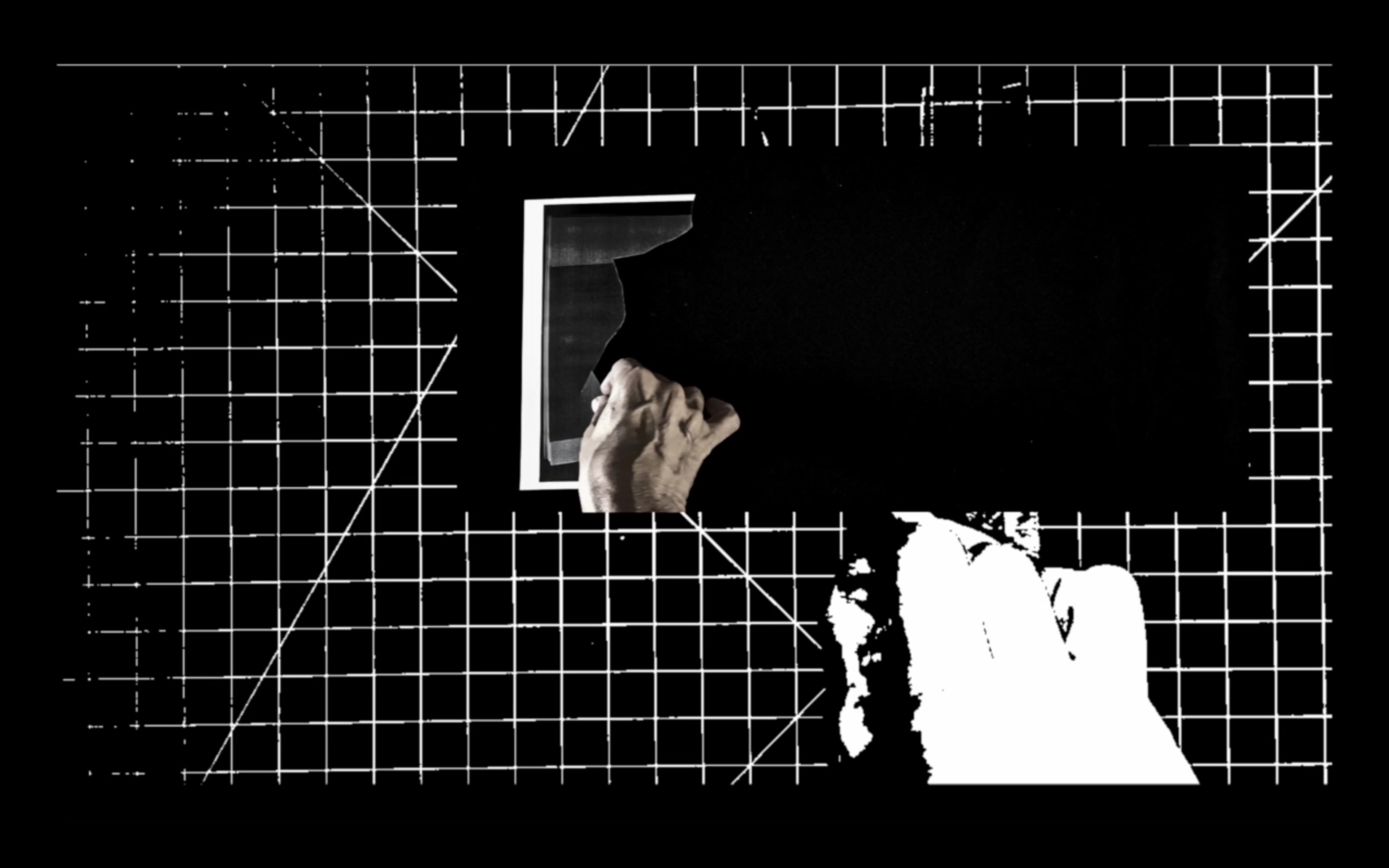











Hand to Mouth, a photo series, 2025 and Surviving Images, a video based on recorded lecture-perfromance, 2025
As part of Unfolding Desire at Trieste Contemporanea
A project by AiR Trieste in partnership with La Collina Social Cooperative,
Trieste Contemporanea, and Griffin Art Projects
Curators: Francesca Lazzarini and Elham Puriya Mehr
Artists: Ofri Cnaani and Evann Siebens
In collaboration with: Escuchame and Collettivo Marte
Unfolding Desire is a research project that stems from the encounter between artistic practices, archive theory, memory, and shared experiences to imagine possible futures in a time marked by the re-emergence of authoritarian impulses and normalising logics.
Ofri Cnaani’s work engages with the lived residues of deinstitutionalization to rethink archival, classificatory, and digitization practices. Informed by San Giovanni’s relational model of care, where healing arises through proximity rather than confinement, her project approaches the CDD as a living, affective field rather than a static collection of materials. Through the involvement of Escuchame and Marte collective participants in a workshop held by the artist, documents and images become tools to think with, hold with, and act with. While the CDD has always been subject to the instability of political and economic agendas, the partial digitization envisioned by Cnaani resists stabilizing an institutional past. Instead, it proposes a method grounded in adjacency, memory, collaboration and embodied presence. Rejecting generic metadata systems that flatten context, the workshop and the resulting artworks treat digitization not as neutral transfer but as a socially embedded act: shaped by decisions about what is preserved, by whom, and for whom. Inspired by Aby Warburg’s “law of the good neighbour,” which arranged books by proximity of thought, not taxonomy, Cnaani extends this principle to images, placing them in relation, where meaning emerges in between and in with-ness. She does this in the photographic series Hand to Mouth (2025), where her hands engage both with those of the workshop participants at San Giovanni and with the gestures from Bruno Munari’s book Speak Italian!, highlighting the affectiveness of hapticality as an alternative form of engagement. She continues this approach in the video Surviving Images, where materials selected by participants are mobilised to construct a new narrative. Through collectively being and engaging with images, her work resists extractive, colonial logics of classification, now echoed in AI systems, and instead frames digitization as a performative, situated act of care, shaped by collective negotiation and grounded in micro-struggles for access and specificity.
A segemnt from Surviving Images video that is based on a lecture-perfromance:
We met again on May 14th, 3PM. I was still on the screen. Guillermo, Marina, Diego, Renato, Pavel, Mad Max, Cecilia, Samuel, Emidio, Roberto, Eduardo, Diana and Lydia. Also, Francesca, Michaela , Elham, and Evann. Nothing ever prepared us to speak about proximity from far away, but we were making proximity from far away.
We spoke about how images speak to one another, how do they answer back? And about Aby Warburg’s intervals, the spaces between images that have, he proposed, their own Iconology. They are units of meaning, not a gap or a void, but a pause. A much-needed pause that makes room for a conversation. I asked you to choose images from last time, place them and connect them. Making the intervals work, making them speak with their hands, singing the song of the ones who are supposed to be silent. And you were making the intervals work. You did, and I learned that from you.
That art is spreading everywhere
That art will save us
That the question is the answer. And the answer is in the question
That no one wants a professional treatment, but equal rights.
That your body belongs to you
That freedom heals
That the body heals in its freedom
That colours and crayons are acts of resistance
That Art is an act of residence and an opportunity for communication
That Art will save us
And that is spreading everywhere
That Marina is a work of art herself
That today you feel like the main character of your life
That, unless a cure is without money, you are not free
That horses have eyes on their side (but I knew this one already)
That we should always pay attention to the predators.
That Insanity is a paradox
That the centre of documentation is an actual resistance
That the institutions would like them to be erased
That you brought freedom to the inmates in Leros, only speaking with your hands
That 100 patients in Leros had fled beyond the walls. That intervals of freedom are in the invention of escape
Thats hands is the language when no language is found
That love is the message.
---------------------------------------------------------------------------------------------------------------------
Unfolding Desire Read full curatorial text by Francesca Lazzarini and Elham Puriya Mehr
In an era marked by the troubling resurgence of populist and authoritarian tendencies worldwide, Unfolding Desire brings together artists, curators and practitioners from different experiences and conditions to delve into the affective and sensorial territories of the archive where new forms of resistance can be imagined and set in motion. Mobilizing the concept of desire for the future, the project – organized by Air Trieste in partnership with Trieste Contemporanea, the social cooperative La Collina, and Griffin Art Projects – unfolds through collaborations with the Documentation Center (CDD) Oltre il Giardino of San Giovanni ex-psychiatric hospital, the Marte collective, and the programme Escuchame by Radio Fragola, engaging with the radical notion of lunatic desire as a portal for envisioning alternative futures. It asks: What creative methods can we develop to explore, practice, and sustain 'desire' and transfer its potentialities to the future? Through a constellation of workshops, residencies, video projects, events, and an exhibition, Unfolding Desire aims to develop new critical and somatic tools for imagining and practicing care, cultivating new terrains for collective futures through research into the materials of the CDD.
Addressing the global resurgence of fascism, Brazilian psychoanalyst and scholar Suely Rolnik identifies desire as the central site of struggle within the neoliberal and financialized phase of capitalism. In this context, Rolnik describes the "coup," the seizure of power by neoliberal and neoconservative alliances, as a mechanism that captures and immobilizes desire, preventing it from sustaining its insurgent, world-making force. Rather than fueling creative transformation, under this regime, desire is trapped, neutralized, and instrumentalized to reinforce domination and capitalist accumulation. Resisting this capture requires activating the unconscious through the action of micropolitics, to make it a space of potentiality, where lunatic or unruly desires can imagine and enact new futures. It is in this terrain that collective practices of care, resistance, and invention must take root.
This aim has encouraged us to initiate our collective resistance by delving into the material collected by Oltre il Giardino about the experience and history of the ex-psychiatric hospital of San Giovanni Park, which offers a unique vantage point for examining the radical transformation of psychiatric care in the 1970s. Under the leadership of Franco Basaglia, this revolution dismantled the oppressive structures of institutionalization, proposing instead that care must be woven into the very fabric of society. For Basaglia, healing was inseparable from emancipation: transforming practices of care meant transforming society itself. His work culminated in the abolition of coercive treatments such as shock therapy and physical restraints, leading to Italy’s landmark Law 180 in 1978. It was later carried forward by figures such as Franco Rotelli, turning Trieste into an example of a collective mental health system grounded in ethical responsibility and inclusivity, what Pantxo Ramas refers to as an ecology of care. In this ecology, art has always played a relevant role, meeting with the struggles for rights to overcome stigmas and prejudices and to open new cultural, educational, and productive horizons. This setup allowed patients and workers to re-imagine and express their dreams for a new future through artistic means. It encouraged experimentation, invention and imagination and enabled social change, transformation, and becoming: in a word, unfolding.
In The Fold, Laura U. Marks writes, “as Gilles Deleuze, often with Félix Guattari, emphasized again and again…the relevant category is not Being—what exists—but Becoming—what changes.” In resonance with this view, we understand unfolding as a dynamic process that draws the perception of our senses towards the seemingly nonexistent as it rolls into being. In the project, it is through unfolding that artistic practices bridge archival images, their anecdotes, and latent stories with the body, generating profound affective responses, shock, joy, sorrow, or subtle resonances that function as embodied forms of knowledge. As Marks notes: “You can reach into the most compressed thing – a rock, an emoji, a preserved lock of hair, a frame of film, a name on a black Zoom screen – to unfold its story. From world to medium to us, unfolding expands and contracts the connective tissue like an accordion”, enabling a dance with ghostly traces and the invisible to take form.
For Unfolding Desire, the archive is not merely a structure of memory but a site of unfolding; it is a projection of desire, not only for the past but for a future anchored in what can be remembered, recovered, and reactivated. This is an attempt to script the future, to extend life into what is yet to come. Still, desire remains incomplete, marked by loss, distortion, and omission. The unfolding desire of the archive insists that the most radical futures are those that resist full capture, that remain elusive and emergent. We whisper of another kind of future, not yet legible, but already present in bodies, atmospheres, and affects, a horizon vibrating with the possibilities of what might still come.
Through diverse practices, visual, performative, sonic, and relational, the artists involved in the project trace how desire can be wrested from capture, re-attuned to the forces of life rather than domination. They invite us into spaces where new subjectivities may emerge, where the unconscious is not merely a terrain of regulation, but of emancipation. In doing so, they insist that the struggle for a livable future must begin here, in the micropolitical folds where desire is still unfolding.
Ofri Cnaani’s work engages with the lived residues of deinstitutionalization to rethink archival, classificatory, and digitization practices. Informed by San Giovanni’s relational model of care, where healing arises through proximity rather than confinement, her project approaches the CDD as a living, affective field rather than a static collection of materials. Through the involvement of Escuchame and Marte collective participants in a workshop held by the artist, documents and images become tools to think with, hold with, and act with. While the CDD has always been subject to the instability of political and economic agendas, the partial digitization envisioned by Cnaani resists stabilizing an institutional past. Instead, it proposes a method grounded in adjacency, memory, collaboration and embodied presence. Rejecting generic metadata systems that flatten context, the workshop and the resulting artworks treat digitization not as neutral transfer but as a socially embedded act: shaped by decisions about what is preserved, by whom, and for whom. Inspired by Aby Warburg’s “law of the good neighbour,” which arranged books by proximity of thought, not taxonomy, Cnaani extends this principle to images, placing them in relation, where meaning emerges in between and in with-ness. She does this in the photographic series Hand to Mouth (2025), where her hands engage both with those of the workshop participants at San Giovanni and with the gestures from Bruno Munari’s book Speak Italian!, highlighting the affectiveness of hapticality as an alternative form of engagement. She continues this approach in the video Surviving Images, where materials selected by participants are mobilised to construct a new narrative. Through collectively being and engaging with images, her work resists extractive, colonial logics of classification, now echoed in AI systems, and instead frames digitization as a performative, situated act of care, shaped by collective negotiation and grounded in micro-struggles for access and specificity. These new works dialogue with a previous series by the artist, Statistical Bodies (2020-2023), that explores questions of organic-electronic care, body datafication, and the incomputable. By paying attention to the impulse of capital as it intimately circulates the body, the works identify moments that hold new nexus of data, extraction and the corporeal, but also carry the potential of friction, or rupture of the seamless flow of those transactions.
Like Cnaani’s, Evann Siebens’ works emerge from a close engagement with the images of Oltre il Giardino and the people who animate San Giovanni Park on a daily basis. The artist’s body plays a central role; it is through an embodiment of the CDD materials that she creates a suspended space of encounter, where knowledge, desire and new possibilities can emerge. The series Embodying the Unarchivable (2025) resonates with the idea of that which reveals: embodiments of fears, fantasies, and not yet formulated aspirations—always excessive and irreducible. The result of this process is a series of layered images incorporating performative gestures and hybrid figures that compress multiple temporalities into singular frames—bodies in flux, saturated with movement and transformation—to expose the materials to deeper emotional and affective engagement. Siebens’ research mobilizes the notion of the uncanny, read as a battleground of ghostly forces constantly made and unmade. Through her works, the artist evokes it, transforming its monstrous connotations from a site of stigma into a liminal presence that disrupts order and reawakens forbidden desires.
Even in the creative process of Performing the Unpredictable (2025), the artist's body offers itself as a convergence for multiple forces. The work includes a live performance—realized in collaboration with sound artist Samuel Codarin and actor Pavel Berdon—and a video piece. Recorded at San Giovanni Park during the residency in Trieste, the video features Berdon, Codarin, Diego and Renzo Porporati, Maximillian Rosani, Guillermo Giampietro, and many other participants from Escuchame. It reflects Sieben’s conception of the camera as an extension of her own limbs. The sense of interaction, complicity, and relationality that emerges within and thanks to the moving images is further intensified in the live performance, where the video is projected onto the artist and Berdon’s bodies, becoming a conduit, just as the live sound performed by Codarin acts as a connective tissue. The improvisational interplay between bodies, images, voices, and sound conjures a charged moment of anticipation, presaging the repressed to resurface and the unexpected to come.
With its complex structure, composed of different events and fleeting moments of collective exchange, Unfolding Desire maps its processual and affective terrain. More than a project, it becomes a living practice that reclaims the imaginative force of desire through shared gestures, resonant bodies, and relational encounters. At its core lies a commitment to collective recognition and transformative care, where madness is embraced not as a deficit but as a generative force. By centring embodied participation and affective attunement, Unfolding Desire opens a space for imagining otherwise—a space where alternative futures can be felt before they are fully formed, and where new forms of life may quietly take root in the folds of togetherness.